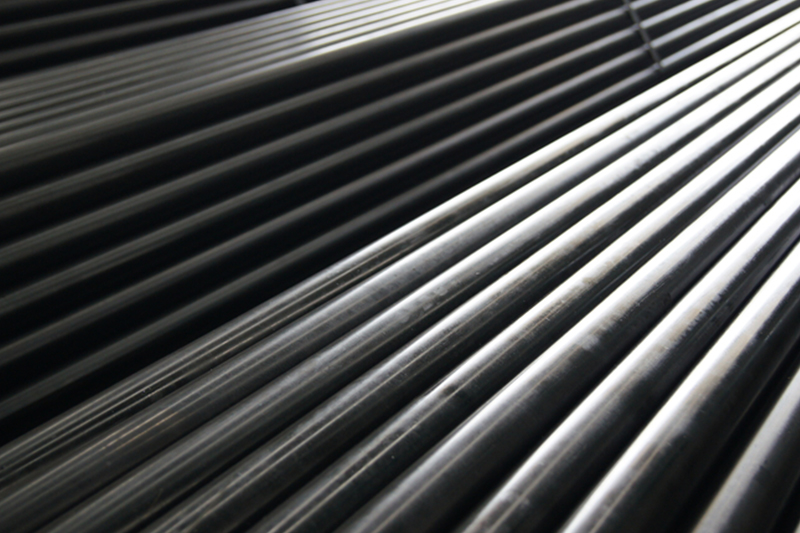Heat exchanger boiler tubes are key components used in industrial boilers and are mainly used in heat exchange processes. In boilers, these tubes are usually arranged in a tube bundle form, and by allowing high-temperature flue gas or water vapor to flow through the tubes, heat is transferred to water or other media flowing outside the tubes (such as feed water in steam generators) to achieve effective utilization and conversion of heat.
The material of the boiler heat exchange tube must have good high temperature resistance, corrosion resistance and good thermal conductivity. Common materials include carbon steel, alloy steel, stainless steel, nickel-based alloys, etc. The specific material to be selected depends on the operating temperature, pressure and the properties of the fluid being processed.
The boiler heat exchange tube is generally made of seamless steel tubes to ensure its strength and sealing. Depending on the needs, finned tube design may be used to increase the heat transfer area and improve the heat exchange efficiency, especially in air heaters or waste heat recovery equipment. The tube spacing and arrangement method will also affect the heat transfer effect and the ability to prevent dust accumulation.
The main connection methods between the heat exchange tube and the tube sheet include expansion, welding, flange connection, etc. The expansion process requires a certain center moment between the heat exchange tube and the tube hole to ensure expansion compensation space and avoid stress concentration. Special treatment may be required at both ends of the tube, such as expansion, shrinkage or the use of U-shaped elbows to adapt to different installation requirements and reduce the impact of thermal stress.
Due to long-term exposure to high temperature and high pressure and erosion by particulate matter and chemicals in the flue gas, the heat exchanger boiler tube needs to be cleaned and inspected regularly to prevent scaling, corrosion and wear. Cleaning methods include physical flushing, chemical cleaning and online mechanical descaling technology.
The safe operation of boiler heat exchange tubes is crucial, so non-destructive testing such as ultrasonic flaw detection and eddy current testing should be carried out regularly to ensure that there are no cracks, corrosion and thinning on the tube wall.
In order to improve the heat exchange efficiency, sometimes a turbulent device is added to the tube, such as a spiral groove tube, an internal threaded tube, etc., to change the fluid flow state and enhance the convective heat transfer effect. In summary, the design, material selection, manufacturing, installation and maintenance of heat exchanger boiler tubes.
In summary, the design, material selection, manufacturing, installation and maintenance of heat exchanger boiler tubes must strictly follow relevant standards and specifications to ensure that the entire boiler system operates efficiently, safely and stably.
1. Material selection
The material of the boiler heat exchange tube must have good high temperature resistance, corrosion resistance and good thermal conductivity. Common materials include carbon steel, alloy steel, stainless steel, nickel-based alloys, etc. The specific material to be selected depends on the operating temperature, pressure and the properties of the fluid being processed.
2. Structural design
The boiler heat exchange tube is generally made of seamless steel tubes to ensure its strength and sealing. Depending on the needs, finned tube design may be used to increase the heat transfer area and improve the heat exchange efficiency, especially in air heaters or waste heat recovery equipment. The tube spacing and arrangement method will also affect the heat transfer effect and the ability to prevent dust accumulation.

3. Processing and connection
The main connection methods between the heat exchange tube and the tube sheet include expansion, welding, flange connection, etc. The expansion process requires a certain center moment between the heat exchange tube and the tube hole to ensure expansion compensation space and avoid stress concentration. Special treatment may be required at both ends of the tube, such as expansion, shrinkage or the use of U-shaped elbows to adapt to different installation requirements and reduce the impact of thermal stress.
4. Maintenance and cleaning
Due to long-term exposure to high temperature and high pressure and erosion by particulate matter and chemicals in the flue gas, the heat exchanger boiler tube needs to be cleaned and inspected regularly to prevent scaling, corrosion and wear. Cleaning methods include physical flushing, chemical cleaning and online mechanical descaling technology.
5. Safety issues
The safe operation of boiler heat exchange tubes is crucial, so non-destructive testing such as ultrasonic flaw detection and eddy current testing should be carried out regularly to ensure that there are no cracks, corrosion and thinning on the tube wall.
6. Performance optimization
In order to improve the heat exchange efficiency, sometimes a turbulent device is added to the tube, such as a spiral groove tube, an internal threaded tube, etc., to change the fluid flow state and enhance the convective heat transfer effect. In summary, the design, material selection, manufacturing, installation and maintenance of heat exchanger boiler tubes.In summary, the design, material selection, manufacturing, installation and maintenance of heat exchanger boiler tubes must strictly follow relevant standards and specifications to ensure that the entire boiler system operates efficiently, safely and stably.
Previous:Stainless Steel Plate Testing









